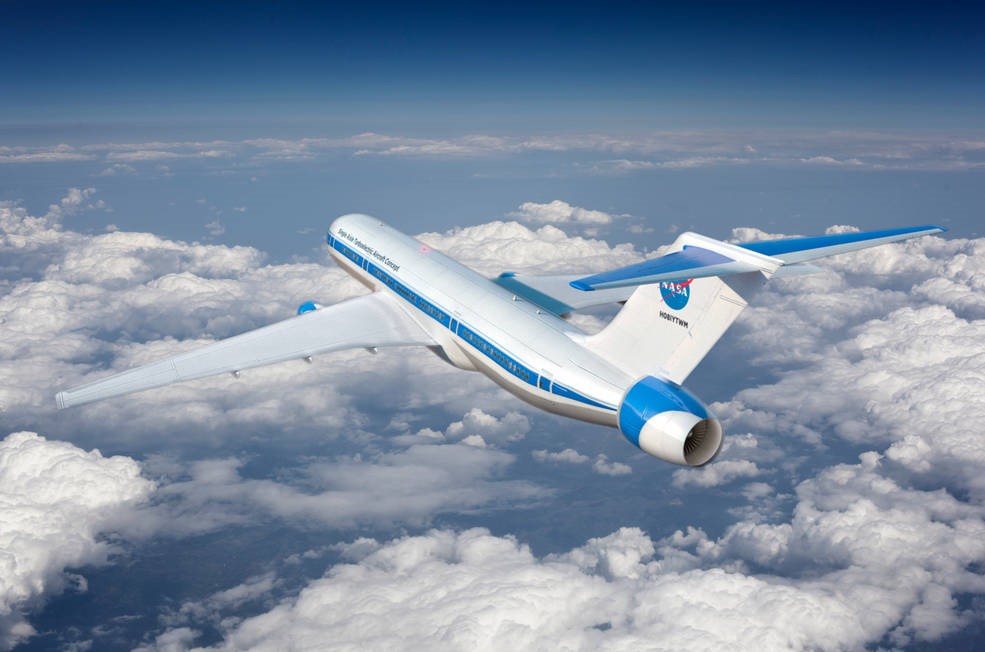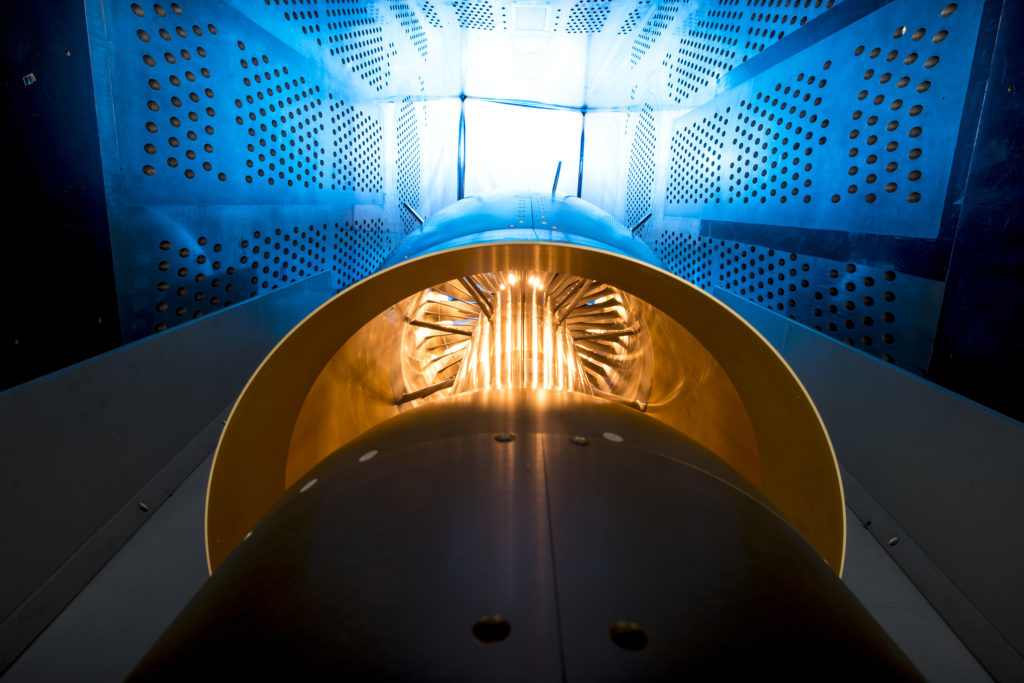Single-aisle Turboelectric Aircraft with Aft Boundary-Layer Propulsion
Summary
Status: Active
A key priority for NASA Aeronautics is investing in electrified aircraft propulsion (EAP) technologies for their potential to reduce fuel consumption, emissions, and noise for commercial airplanes. Achieving these benefits could be a key step towards environmental sustainability for the entire aviation industry.

While electric propulsion may be the next revolution in air transportation, development is limited by current battery technology and electric charging infrastructure. Today’s batteries and maintenance systems are simply not sophisticated enough to sustain commercial all-electric aircraft. Many electric aircraft concepts currently being studied rely on future innovations to solve these problems and could be waiting decades for a suitable power system.
The STARC-ABL concept under development by ASAB aims to bridge the gap between current jet fuel-powered aircraft and future all-electric vehicles. A joint effort between ASAB and other NASA branches, the STARC-ABL is a 150-passenger class commercial transport with a traditional “tube-and-wing” shape. The plane relies on turboelectric propulsion, meaning that it uses electric motors powered by onboard gas turbines.
The aircraft’s two traditional jet engines are mounted under the wings, which also contain electric generators. Electrical power is sent to the tail of the aircraft, where an all-electric propulsor takes advantage of an aerodynamic benefit known as boundary layer ingestion (BLI). The idea behind BLI is to reduce drag caused by slow-moving air that collects around the plane. In the STARC-ABL, this slow moving air flows through the tail-mounted engine and is sped up then released behind the airplane to reduce drag and improve fuel efficiency.
The STARC-ABL is a promising concept that could reduce emissions and airline ticket prices through lower fuel consumption. The aircraft has many similarities to current, conventional designs, which reduces risks and maintains the high level of safety enjoyed by today’s air travelers. This completion will benefit not only aircraft manufacturers and airlines but also the flying public by outlining a path to more efficient and environmentally friendly aircraft.

